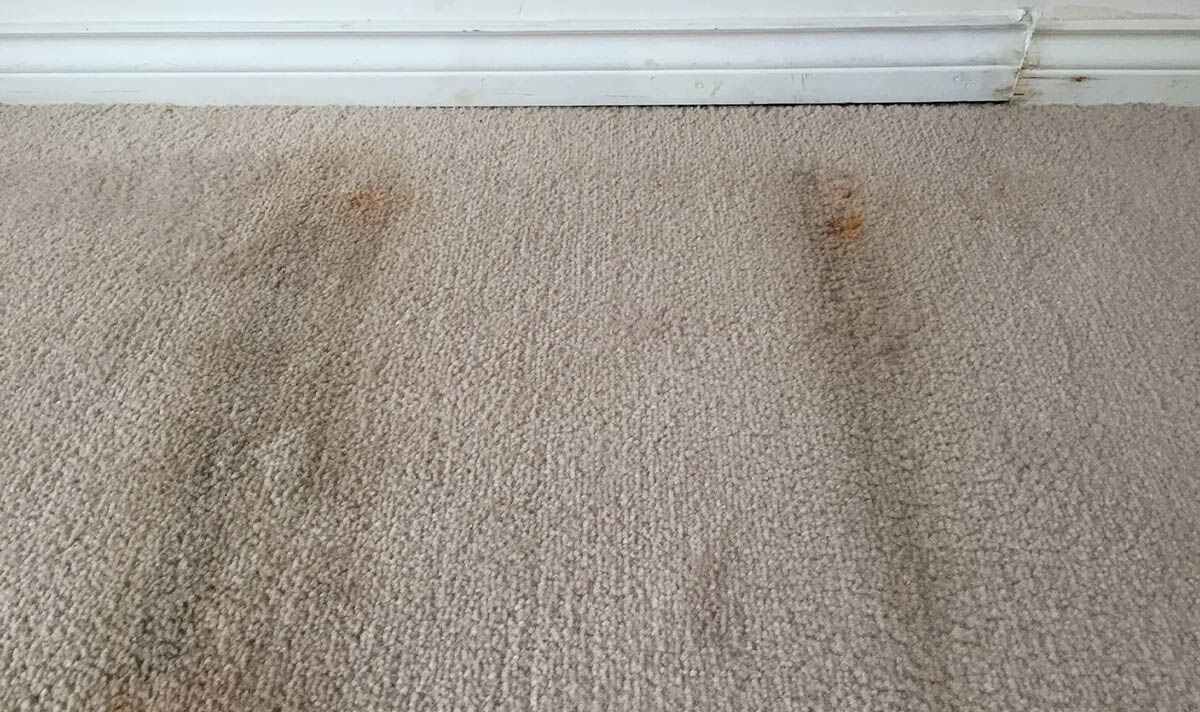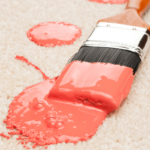You might have heard the rumour that getting your carpets cleaned can cause mould to grow underneath them. Is there any truth to this, or is it just a misconception? The answer isn’t a straightforward ‘yes’ or ‘no’, as there are a number of influencing factors at play. Here’s all you need to know.
1. The lowdown on mould
Let’s start by understanding what mould is, how it grows and what kinds of conditions it thrives in.
Essentially, mould is a small, seed-like, fungal organism that naturally lives outdoors. It plays a vital role in breaking down decaying leaves, plants and other vegetation. Mould thrives in dark, moist and humid environments, so although it’s at home on a damp woodland floor, it’s also happy living indoors in our houses. Kitchens, bathrooms and basements are the ideal places for mould to haunt, but anywhere that’s wet and humid will do. So if your carpets are damp – you’re effectively welcoming mould in with open arms!
As well as needing moisture for mould to grow, it requires a food source – dirt and organic substances keep mould fed, enabling spores to proliferate, spread and grow.
2. The problem with mould
As far as unwelcome visitors go, mould is probably high up on the list for most homeowners. Not only can it cause costly damage to your property, but it’s harmful to your health. Mould produces toxins and allergens that are released into the air, and can cause a number of unpleasant symptoms. This includes a runny nose, sore throat, cough, sneezing and even the triggering of asthma attacks. Young children, the elderly and those with respiratory symptoms can be especially vulnerable.
Mould can also damage the structural integrity of the fabrics in a carpet, and if it isn’t removed at the early stages, your only option left might be to get a new carpet. In some cases, you might even need to get the floorboards replaced.
3. Mould and carpet cleaning
Carpets are made from a porous material that acts like a filter, trapping airborne substances, like mould. The backing of a carpet works in a similar way to a sponge, holding onto any moisture, making it the perfect environment for mould to thrive.
Because mould likes damp places, if you get your carpets cleaned using a water-based cleaning method, such as steam cleaning, there is a chance that mould could form under the carpet afterwards. However, this only happens in certain situations.
Typically, mould will only form when carpets have been cleaned using improper cleaning and drying techniques, or if inferior products and equipment have been used that don’t remove dirt properly.
Cleaning a carpet involves a number of important stages or processes – if any of these are skipped it can mean that a carpet isn’t cleaned properly or thoroughly, or more water than necessary is used and not effectively removed from the carpet. Ideally, look for a cleaning company that provides a 10-step cleaning process.
Equally, if excess water pressure is applied during the cleaning process, this can leave the carpet padding soaking wet, even if the carpet itself seems dry, which will allow mould to form. Check that the cleaning company you use sticks to using industry standard water pressure levels.
A professional carpet cleaning company will do everything possible to prevent mould from growing in your carpets. They’ll use high-quality technology that’s low on water consumption, so carpets don’t need to be overly wet during the cleaning process. The latest cleaning machines are also able to remove most of the water used during the cleaning process, as well as dirt and residues, so mould doesn’t have anything to feed off.
Mould can form after a couple of days of exposure to moisture, so it’s essential to use a carpet cleaning company that can dry carpets quickly. These days, with modern technology, carpets can be dried in around 2-3 hours, so there’s no need for carpets to remain damp for many hours or even days on end. Because one carpet cleaning company can vary significantly from the next, always ask about how your carpets will be cleaned, and how long they’ll take to dry.
It’s also important to understand that getting your carpets cleaned by recognised, reputable carpet cleaners can help to prevent mould from forming in the first place. Not only does professional cleaning remove mould spores already present in carpets, but by eliminating the dirt, debris and stains that mould feeds off, stopping the food source means mould can’t proliferate.
4. Detecting mould
How do you know if mould is present in your carpets? Because mould grows in dark places, the first area it will grow in your carpet is underneath it on the backing or padding, if there’s enough moisture available. So, at first, you won’t necessarily be able to see it, but you might notice a damp, musty smell. As the mould spores proliferate and spread up into the carpet, you might then notice small patches of discoloration. Mould can be black, orange, white or green, depending on what caused it to grow in the first place.
It takes up to 48 hours for mould to grow. Spores can start colonising in around 3-12 days, and it takes just 18 days on average for mould to then become visible.
If the area of mould growth becomes extensive, the only permanent solution to fix the problem is to get your carpets replaced. You might even need to get a mould specialist in.
5. Other causes of mould in carpets
Provided you use a professional carpet cleaning company that uses low water-based cleaning solutions and rapid drying procedures, your carpets shouldn’t come under attack from cleaning-related mould. However, mould can still live and spread in carpets by other means.
Carpets that have suffered water damage, such as flooding or a burst pipe, can provide the perfect environment for mould to flourish. Dirty carpets can encourage mould formation, too.
6. Preventing mould in carpets
There are lots of ways you can prevent mould from colonising your carpets. The most important thing is to make sure carpets aren’t exposured to moisture or stagnant water for longer than 48 hours. Remove spills immediately, and open windows or use fans to allow good air ventilation to keep carpets dry. A dehumidifier can help to remove excess moisture from the atmosphere. Humidity levels in a home should be around 30-60%.
Avoid laying carpets down in damp, humid rooms such as bathrooms or basements. Choose carpets that have a high-quality, rubber carpet padding with anti-microbial properties, to prevent mould from forming. Synthetic carpets such as nylon are less likely to attract mould growth compared to natural materials like wool.
7. Mould likes the dark, so keep rooms as light as possible.
Regular vacuuming can help to remove some of the mould spores in a carpet. However, the most effective way to eliminate the highest levels of mould spores from carpets, and to get rid of the odours and dirt that might encourage mould to grow, is through regular professional cleaning.
At our professional carpet cleaners London homes and businesses and those throughout the South East can rely on us to provide fast, meticulous cleaning and drying of your carpets. We use water-efficient, high-tech machines that remove up to 98% of carpet moisture, dirt, debris and residues, and we can dry carpets in just 2-3 hours. We also have hot air dryers which can speed up the drying process, preventing the conditions that mould likes to thrive in. Keep mould away from your carpets – contact Carpet Bright UK for a free quote.







